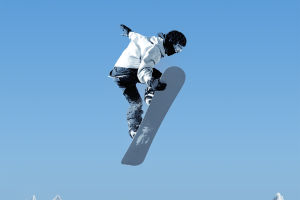Hey Lykkers! Have you ever thought about flying freely, soaring above the earth? Well, that's exactly what paragliding offers. It's a thrilling adventure that allows us to experience the freedom of the skies like never before.
Born from the love of skydiving and hang gliding, paragliding has become a popular activity in countries like Europe, Japan, and even Taiwan. It's different from traditional parachuting, giving us the chance to glide effortlessly through the air, embracing the feeling of freedom.
Paragliding
Video: easygliderful
A Dream of Flying
Since ancient times, humans have dreamed of flying. Whether it was stories of flying chariots in Eastern legends or the famous “Chang'e flying to the moon,” these myths reflected our deep desire to break free from the earth. Today, with the invention of paragliding, that dream has become a reality. We now have the chance to soar through the air, feeling the peaceful yet awe-inspiring beauty of nature as we float above it.
The History of Paragliding
The origins of paragliding date back to the early 1970s in Europe, when mountain climbers began using parachutes to glide down from high altitudes. They discovered a whole new way of experiencing flight, leading to the creation of this exciting sport.
At first, paragliders were designed based on parachutes used by skydivers, focusing on fast descents while ensuring safety. Over time, technology improved, and modern paragliders can now stay in the air for up to 17 hours and travel over 300 kilometers! Paragliding has become more than just a sport – it's a way to connect with nature and enjoy the thrill of flying.
How Paragliding Works
Paragliding is a type of flight that doesn't rely on an engine but instead uses air currents. The glider's wing, which is made of special fabric, fills with air, creating the unique shape needed for flight. As pilots, we control the glider with great precision, using the principles of aerodynamics to generate speed and lift, allowing us to glide smoothly in the sky. Unlike regular parachutes, the paraglider has air chambers that inflate to create a defined shape, directing airflow to maximize lift and speed.
The flying process also relies on different atmospheric conditions. Thermals (rising air currents) are key to staying aloft, and factors like temperature, humidity, and wind play a huge role in how we navigate the sky. Flying a paraglider is both a science and an art – it requires learning how to read the wind and make split-second decisions.
The Structure of a Paraglider
A paraglider consists of four main components: the wing, the lines, the harness, and the control system. To make it easy to carry, paragliders are packed into a specialized backpack, making transportation simple and convenient.
Types of Paragliders
There are different types of paragliders designed for various skill levels and flying styles. Typically, paragliders are classified into beginner, intermediate, and advanced levels. But some manufacturers go further, offering categories like school, sports, performance, and competition gliders. Each type is designed for specific needs, whether it's for beginners looking to learn or advanced pilots pushing their limits in competitive flying.
Paragliders are tested and certified by international standards, ensuring they are safe for use. This includes rigorous tests by organizations like the French ACPUL, Germany's DHV, and Switzerland's SHV, ensuring that each glider can recover from dangerous situations on its own or with minimal pilot intervention.
Other Similar Aircraft
There are also other types of flying equipment similar to paragliding, such as powered paragliders, which use a motor to provide additional power. There are also hang gliders, which involve using skis to take off from slopes, and kite surfing, where we use large kites on water with a surfboard. Each offers its own unique experience but shares the core thrill of flying.
Paragliding Competitions
Paragliding competitions come in several forms, testing different skills such as airtime, precision, and endurance. Some common types of competitions include:
1. Airtime Contest: The longest time spent in the air wins.
2. Precision Landing Contest: Pilots must land as close to a target as possible.
3. Timed Contest: Pilots must stay aloft for a pre-set amount of time.
4. Cross-Country Contest: Pilots must cover the greatest distance in a designated direction.
Safety First
Safety is paramount when it comes to paragliding, and there are several guidelines that every pilot must follow to ensure a safe flight:
1. Never fly alone – always have an experienced pilot with you.
2. Never fly when you're tired or under the influence of medication.
3. Always wear a helmet and protective gear.
4. Make sure you're familiar with the terrain and weather conditions.
5. After landing, deflate your wing to ensure it's safely packed up.
Remember, while the thrill of paragliding is unmatched, it's important to always prioritize safety.
Conclusion
Paragliding is a unique and exciting way to experience flight, offering freedom and connection with nature. As we take to the skies, it's important to always be mindful of the weather, our skills, and the equipment we're using. Whether you're flying for fun, in a competition, or just for the sheer thrill of it, paragliding offers us the chance to live out the dream of flight that humans have had for centuries.
Ready to take flight? Let's soar through the skies together, Lykkers!


